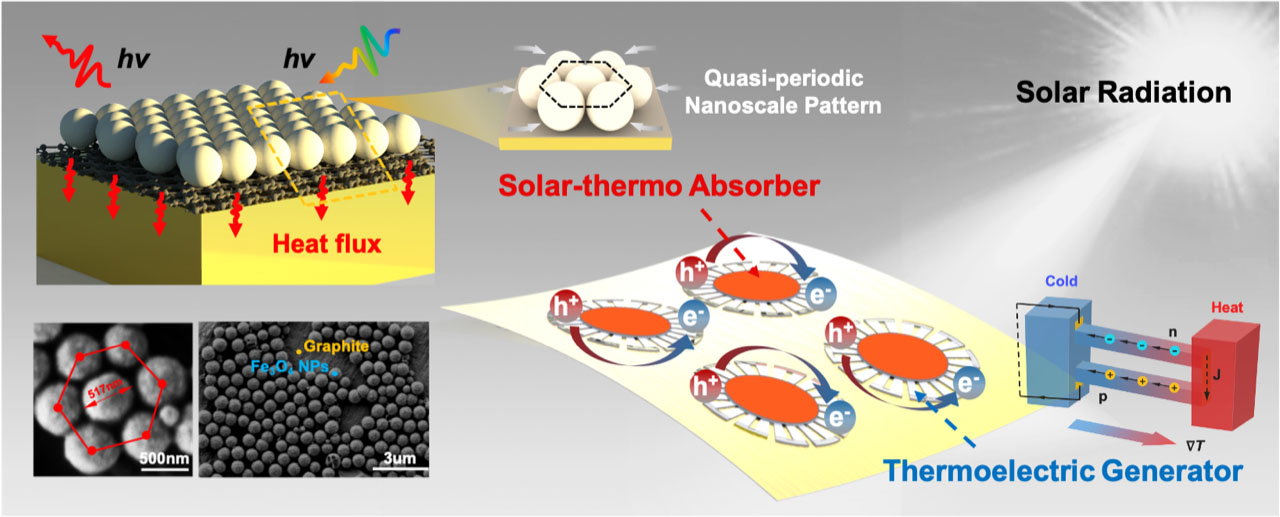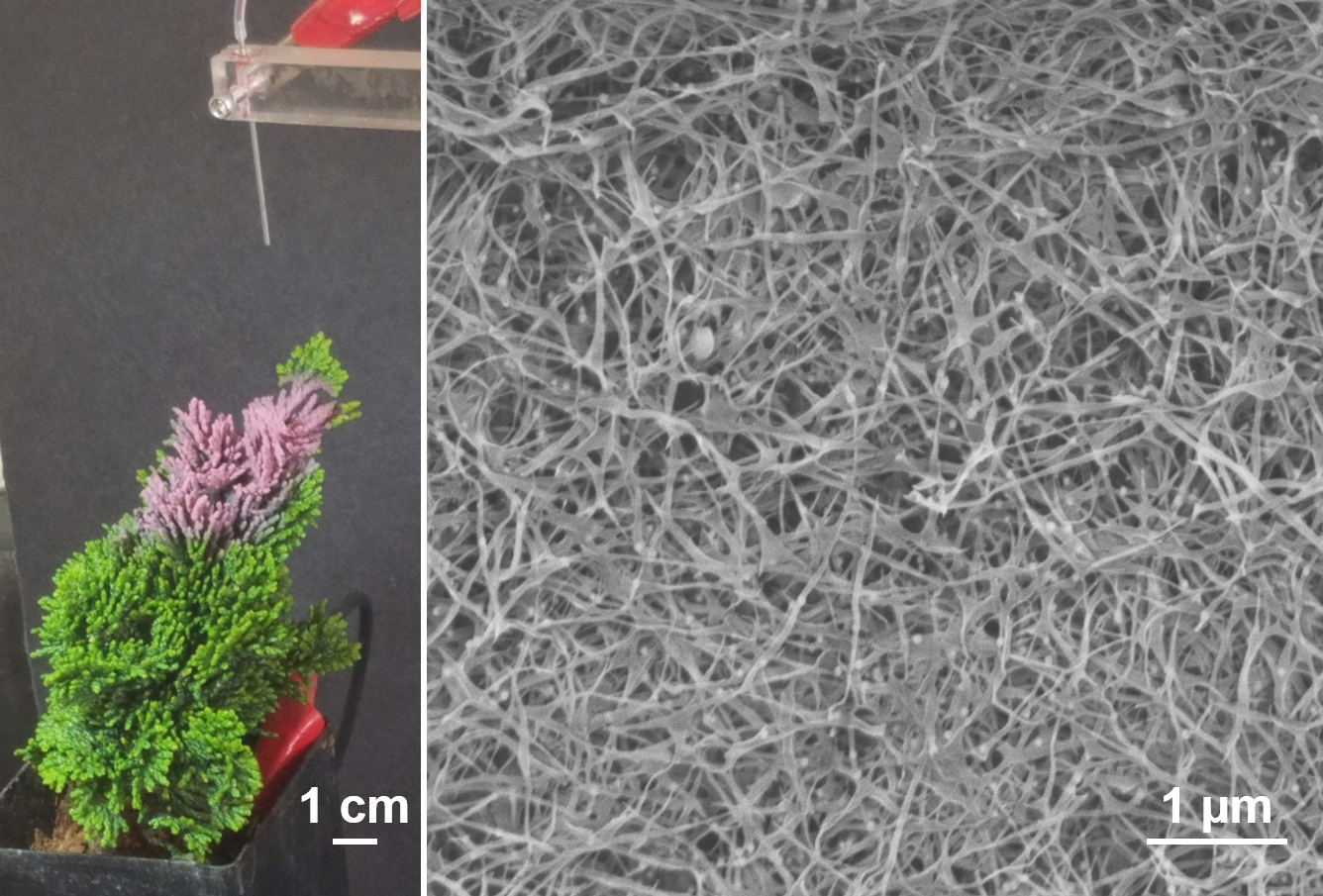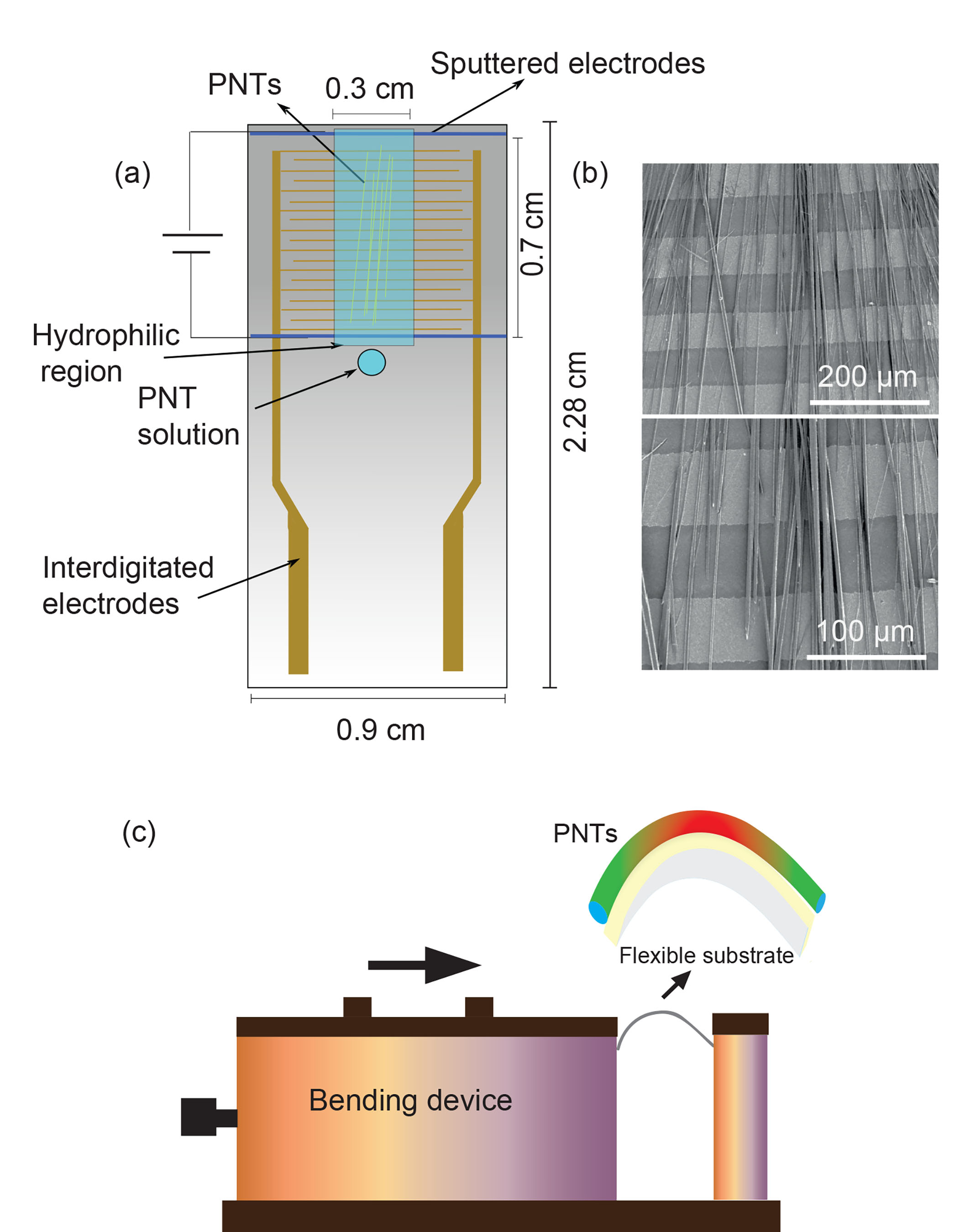Researchers report in ACS Energy Letters that repositioning the electrode in a “blue energy” harvesting device — from the center of a see-sawing liquid-filled tube to the end where the water crashes with the most force — dramatically increased the amount of wave energy that could be harvested.
Tag: energy harvesting

Cracking the Concrete Code
Swanson School of Engineering researchers develop self-sensing metamaterial concrete for smart infrastructure systems

Nanoparticles Self-Assemble to Harvest Solar Energy
In APL Photonics, researchers design a solar harvester with enhanced energy conversion capabilities. The device employs a quasiperiodic nanoscale pattern, meaning most of it is an alternating and consistent pattern, while the remaining portion contains random defects that do not affect its performance. The fabrication process makes use of self-assembling nanoparticles, which form an organized material structure based on their interactions with nearby particles without any external instructions. Thermal energy harvested by the device can be transformed to electricity using thermoelectric materials.
NUS engineers devise novel approach to wirelessly power multiple wearable devices using a single source
Researchers from NUS have come up with a way to use one single device – such as a mobile phone or smart watch – to wirelessly power up to 10 wearables on a user. This novel method uses the human body as a medium for transmitting power. Their system can also harvest unused energy from electronics in a typical home or office environment to power the wearables.
Lawrence Livermore’s ‘Versatile Cold Spray’ technology tabbed as one of the world’s top industrial inventions
Lawrence Livermore National Laboratory (LLNL) researchers are among the developers of the top 100 industrial inventions worldwide, winning an R&D 100 award.

Plant-Based Spray Could be Used in N95 Masks and Energy Devices
Engineers have invented a way to spray extremely thin wires made of a plant-based material that could be used in N95 mask filters, devices that harvest energy for electricity, and potentially the creation of human organs. The method involves spraying methylcellulose, a renewable plastic material derived from plant cellulose, on 3D-printed and other objects ranging from electronics to plants, according to a Rutgers-led study in the journal Materials Horizons.

Energy Harvesting Goes Organic, Gets More Flexible
The race is on to create natural biocompatible piezoelectric materials for energy harvesting, electronic sensing, and stimulating nerves. Researchers decided to explore peptide-based nanotubes, and in the Journal of Applied Physics, they report using a combination of ultraviolet and ozone exposure to generate a wettability difference and an applied field to create horizontally aligned polarization of nanotubes on flexible substrates with interlocking electrodes. The group’s work will enable the use of organic materials more widely.